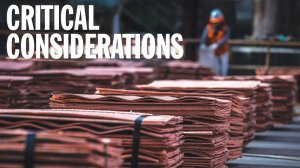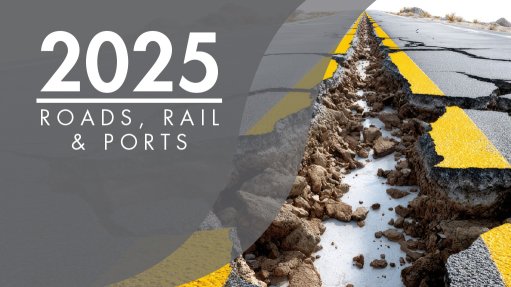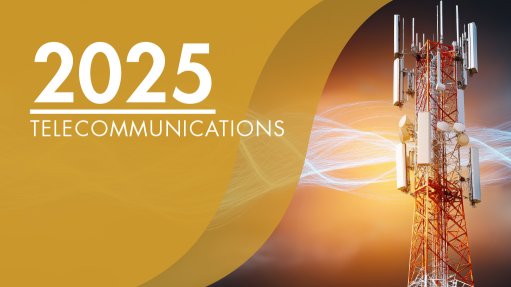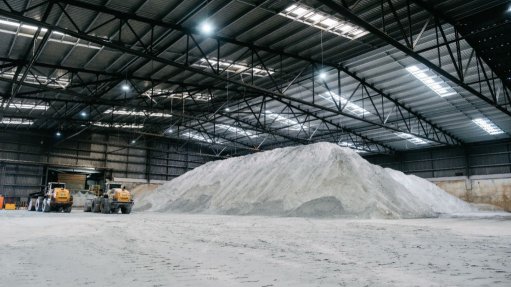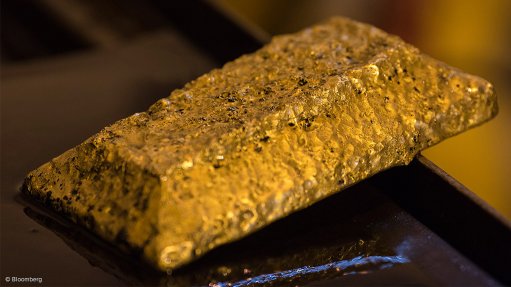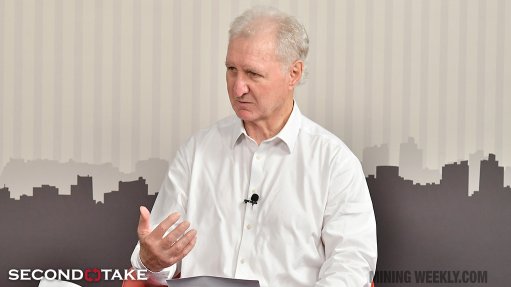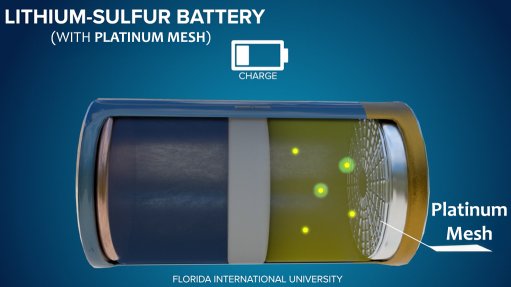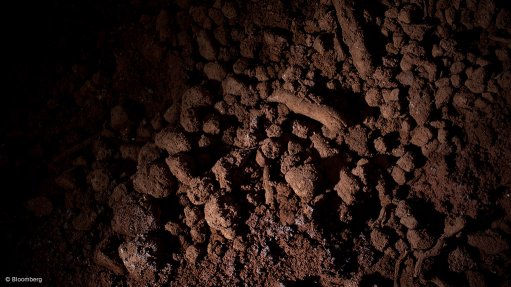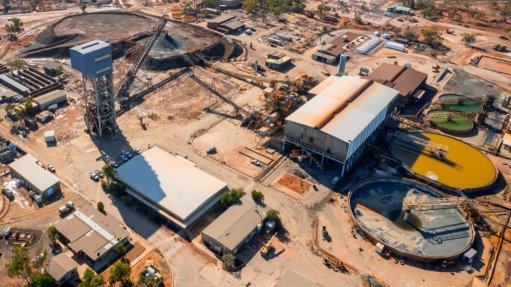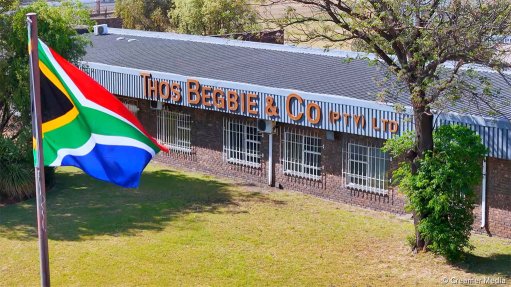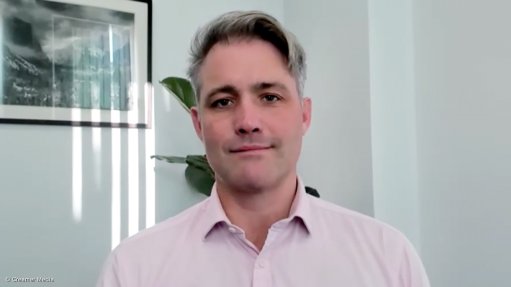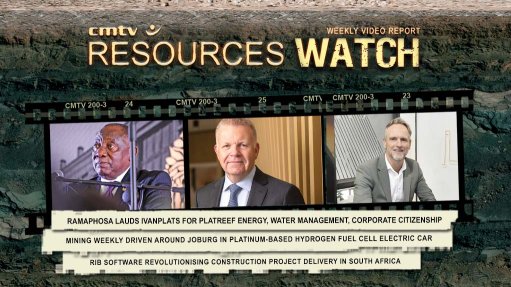From geological data to policy, Africa still has big critical-minerals gaps to close
As the world shifts towards a low-carbon future in response to unrelenting climate change, demand is surging for minerals essential to this transition, many of which are found in abundance across Africa, which boasts an estimated one-third of the reserves. But growing attention is turning to a critical question: Can the continent turn this natural wealth into a lever for its own development, while securing its place as a key supplier to global markets?
In an analytical note, the International Monetary Fund (IMF) forecasts that the continent stands to generate cumulative revenue of about $2-trillion from the four main critical minerals – copper, critical for electrification; nickel, key for battery cathodes and stainless steel; and lithium and cobalt, both critical for battery manufacturing – over the next 25 years.
Promise & Potential
Beyond these four, the continent hosts sizeable reserves of other critical minerals, including manganese, used in steel and battery cathode manufacturing; graphite, essential for battery anodes; platinum group metals (PGMs), with applications in catalytic converters for vehicle exhaust systems; and rare-earth elements (REEs), used in electronics and renewable- energy technologies.
The leading African countries in copper reserve endowment are the Democratic Republic of Congo (DRC), Zambia and South Africa. The DRC also ranks first in cobalt reserves, followed by Zambia and Morocco, while Zimbabwe holds the largest lithium reserve base, with Ghana second and Namibia third. Neighbours South Africa and Zimbabwe have vast PGM reserves, and, along with Madagascar, also boast significant nickel deposits. The remainder of the reserves are distributed as follows: REEs, South Africa and Madagascar; manganese, Gabon, Ghana and South Africa; and graphite, Mozambique and Tanzania.
While Africa possesses extensive critical mineral reserves, it does not have a comparative advantage in all of them. For instance, it is more costly to mine the continent’s mostly rock-hosted lithium deposits, than to extract the brine-based lithium found in Chile, according to the London-based Critical Minerals Africa Group (CMAG), an industry association focused on advocacy, strategic partnerships and thought leadership in the critical minerals space. CMAG’s assessment, which is corroborated by other industry studies, indicates a potential cost differential of as much as 40% to 50% in exploration and milling costs for brine deposits, compared with rock mining. The only downside with brine is that it takes long to extract “because you are at the mercy of nature, as the brine is left on the surface to evaporate in order to get the lithium salts”.
However, when it comes to minerals such as cobalt, copper and bauxite – which is not recognised as a critical mineral by some geopolitical players – Africa enjoys a clear comparative advantage from an availability and quality perspective. Guinean bauxite, for example, with its high aluminium oxide content and low silica, is among the best and lowest-cost metallurgical-grade bauxite globally.
The continent’s proximity to key markets in Europe also gives Africa’s critical minerals sector an edge over producers in other parts of the world.
“We are only about six to seven hours from Europe by plane, and if you were to ship the bulk minerals, it would take a couple of weeks . . . [compared with] bringing the stuff all the way from the other side of the world,” says Dr Theophilus Acheampong, head of research and markets at CMAG.
He tells Engineering News & Mining Weekly that, while many African countries have “fairly good” policies and regulations on the extraction side – such as those related to environmental protection, local content and the hiring of expatriates – much more attention needs to be paid to the midstream and downstream sectors of the critical minerals value chain to retain more in-country and regional value.
“If you want to make, say, aluminium out of alumina, you mine the bauxite and then refine it into alumina and then smelt the alumina into aluminium. However, it requires a lot of electricity to smelt the alumina into aluminium. Many of our countries just don’t have that amount of power and even if they do, it’s extremely expensive, such that they are not competitive,” he says.
“So, for me, those are some of the issues to think about on the policy side.”
He adds that success will also hinge on improving the availability and quality of geological data. “It’s said about 30% of the world’s critical mineral reserves are in Africa. But where did that data and that information come from? We most often source the data from the US Geological Survey or some other jurisdiction instead of our own. In many of our African countries, we don’t really know what we have in the ground because we have not invested in the acquisition of advanced data, such as geological/seismic services, or aerial surveys. Without such data, we go into negotiations with investors from a position of weakness and sometimes later cry that we have been shortchanged; we need to negotiate from a position of strength, and good-quality geological data is key to this.”
Beneficiation Challenges
On the prospects for local beneficiation and value-addition, he highlights limited innovation capabilities and research and development (R&D) as key constraints, coupled with a challenging industrial ecosystem where railways, roads and other logistics infrastructure makes it increasingly difficult to establish industrial clusters that drive economies of scale and scope.
Where competitors in other regions can extract and/or process minerals more cheaply, Acheampong urges African governments to consider introducing incentive frameworks that enhance competitiveness. However, he is quick to add that this may not always be feasible, given the weak fiscal positions of many of the continent’s countries and the competing needs for financing across sectors as diverse as healthcare, education, transport infrastructure and social protection. “It is a chicken-and-egg situation”, he says.
Further, Acheampong believes African countries can improve their investor appeal if they refrain from constantly shifting legislative goalposts. “Governments also sometimes change investment agreements left, right and centre, especially when a new government takes over and decides to renegotiate terms. These things don’t auger well for investment,” he adds.
“The difficulty with the old contracts is that you cannot just wake up and cancel a contract, because there are stabilisation provisions within that contract, and cancelling it triggers arbitration proceedings. The matter goes to court, and there is a whole complicated process, and while all that is going on, investors who would have otherwise come to your country say, ‘Hey, hang on, we are not going there; see what they are doing’.”
“You want a contract that reflects both the risks and opportunities, and the advice I give to African governments is, ‘You need to have skin in the game – use your sovereign wealth funds, use your local private pension funds . . . to also have equity in some of these concessions.’”
Equally important is that host governments adhere to environmental, social and governance (ESG) standards – an issue that is increasingly being raised by investors, especially those from the West.
Amid ongoing geopolitical shifts, especially since Russia’s 2022 invasion of Ukraine, the African critical minerals sector – and the broader mining industry – has witnessed increased investor interest beyond the traditional catchments of China, the US, Canada and Australia, with new entrants over the past two years including companies from Qatar, the United Arab Emirates (UAE) and Saudi Arabia.
“All these companies are now coming in and have actually made or are promising to make investments on the continent. I recall a UAE holding company buying equity in a copper mine in Zambia, and the Saudis have launched a fund, backed by its Public Investment Fund, which is looking at mining assets all over the continent,” says Acheampong.
Similarly, he adds, Turkish and Indian companies are being drawn to African critical minerals, while the Chinese, who have poured billions into commodities projects on the continent over the past two decades, are showing renewed interest. A recent example is the unveiling of plans to rehabilitate the Tazara railway line from the Zambian Copperbelt to the Port of Dar es Salaam in Tanzania – an apparent response to the ongoing Western-financed development of the Lobito corridor from the Copperbelt to Angola’s Lobito port on the Atlantic coast.
Stronger Together
To fully harness the potential of critical minerals, Acheampong cautions, African countries should adopt a coordinated approach instead of each country going it alone. This is primarily because no single country has what he considers the six prerequisites for a successful mining industry: easy access to resources; a skilled workforce and R&D capabilities; a conducive industrial infrastructure and ecosystem; government incentives, policy support and trade policies; a stable investment climate; and adherence to ESG standards.
“It is possible to have a collection of countries coming together and say, for argument’s sake, we are going to process all of the copper in Zambia or in another jurisdiction, and we will have some revenue-sharing mechanism or, when it comes to jobs, some quota system.
“Other than that, it’s still going to be individual countries, and the combined impact is just going to be too small,” he laments.
This is, however, an issue the African Union is alive to, having developed initiatives aimed at ensuring coordinated development of the continent’s mineral wealth.
A case in point is the unveiling in December of the continental body’s Green Minerals Strategy, which underscores the need for Africa to move beyond raw mineral exports and build strong, integrated value chains that foster local beneficiation, job creation and economic diversification.
Illustrating the economic losses from not moving up the value chain, the IMF notes in its analysis that while bauxite fetches a modest $65/t when exported in its raw form, processed into aluminium it fetched $2 335/t at the end of 2023. The Bretton Woods institution also highlights that the DRC, which accounts for 74% of the world’s cobalt reserves, exports 97% of its cobalt unprocessed. Similarly, in Zimbabwe, which hosts 7% of global lithium reserves, more than 1 000 trucks daily are estimated to transport low-concentration, rock-form lithium to ports on the African coastline, destined for China instead of being processed locally.
Acheampong argues that there is sizable demand within Africa to absorb a portion of locally manufactured green industrial components, while the balance could be exported. He cites the two- and three-wheelers used to ferry passengers in many of the continent’s towns and cities as a potential source of demand, saying these could be electrified and powered by locally produced batteries, while other components could also be manufactured, based on local and regional industrial ecosystems. “These things are not too difficult to make, and we could also make some of the intermediate products,” he says. “Of course, at the higher end, we may not be making full electric vehicles, as the volumes are not really there for now.”
Brakes on Transition?
Any contemporary discussion around the energy transition is not complete without factoring in Donald Trump’s return to the White House. Does Acheampong believe this represents a major setback to the development of Africa’s critical minerals sector?
“I believe that, with Trump’s election, we are seeing a slowdown in the pace of the energy transition; the sort of big push in the aftermath of COP 26 in Glasgow is not there. The golden years were between 2020 and 2022. But now the equation has shifted; it’s more about energy security and related to that is that conventional energy forms like oil and gas have come back into energy geopolitics.
“Nevertheless, if you take a long-term view, we will still need these transition minerals, these critical minerals, and Africa is going to be one of the hotbeds for access to these minerals.
“So, the important thing, then, becomes: How do we ensure that when you and I are having this conversation 20 years from now, we are not getting only 26% of minerals-related foreign direct investment going into manufacturing, which is the case currently, with the rest going into extraction, but maybe we have doubled that to almost 50%.”
Article Enquiry
Email Article
Save Article
Feedback
To advertise email advertising@creamermedia.co.za or click here
Announcements
What's On
Subscribe to improve your user experience...
Option 1 (equivalent of R125 a month):
Receive a weekly copy of Creamer Media's Engineering News & Mining Weekly magazine
(print copy for those in South Africa and e-magazine for those outside of South Africa)
Receive daily email newsletters
Access to full search results
Access archive of magazine back copies
Access to Projects in Progress
Access to ONE Research Report of your choice in PDF format
Option 2 (equivalent of R375 a month):
All benefits from Option 1
PLUS
Access to Creamer Media's Research Channel Africa for ALL Research Reports, in PDF format, on various industrial and mining sectors
including Electricity; Water; Energy Transition; Hydrogen; Roads, Rail and Ports; Coal; Gold; Platinum; Battery Metals; etc.
Already a subscriber?
Forgotten your password?
Receive weekly copy of Creamer Media's Engineering News & Mining Weekly magazine (print copy for those in South Africa and e-magazine for those outside of South Africa)
➕
Recieve daily email newsletters
➕
Access to full search results
➕
Access archive of magazine back copies
➕
Access to Projects in Progress
➕
Access to ONE Research Report of your choice in PDF format
RESEARCH CHANNEL AFRICA
R4500 (equivalent of R375 a month)
SUBSCRIBEAll benefits from Option 1
➕
Access to Creamer Media's Research Channel Africa for ALL Research Reports on various industrial and mining sectors, in PDF format, including on:
Electricity
➕
Water
➕
Energy Transition
➕
Hydrogen
➕
Roads, Rail and Ports
➕
Coal
➕
Gold
➕
Platinum
➕
Battery Metals
➕
etc.
Receive all benefits from Option 1 or Option 2 delivered to numerous people at your company
➕
Multiple User names and Passwords for simultaneous log-ins
➕
Intranet integration access to all in your organisation




